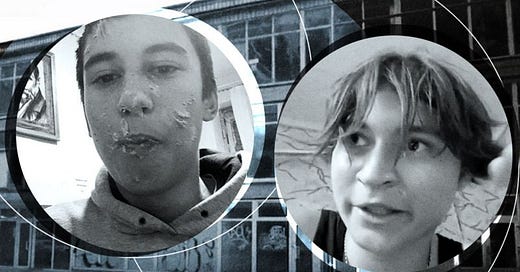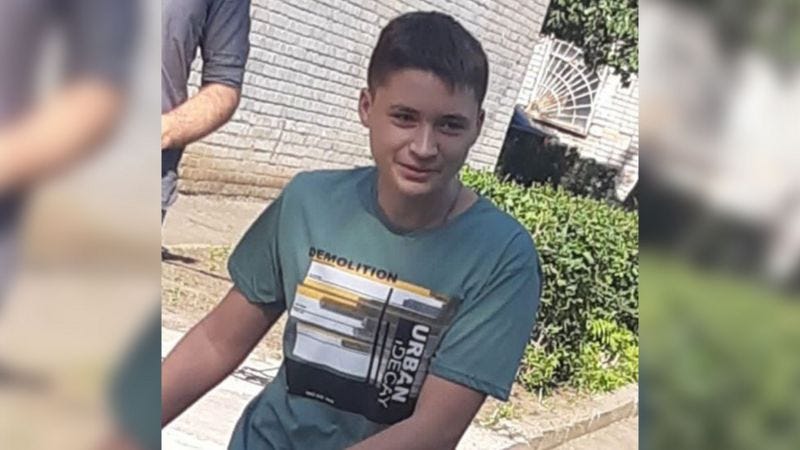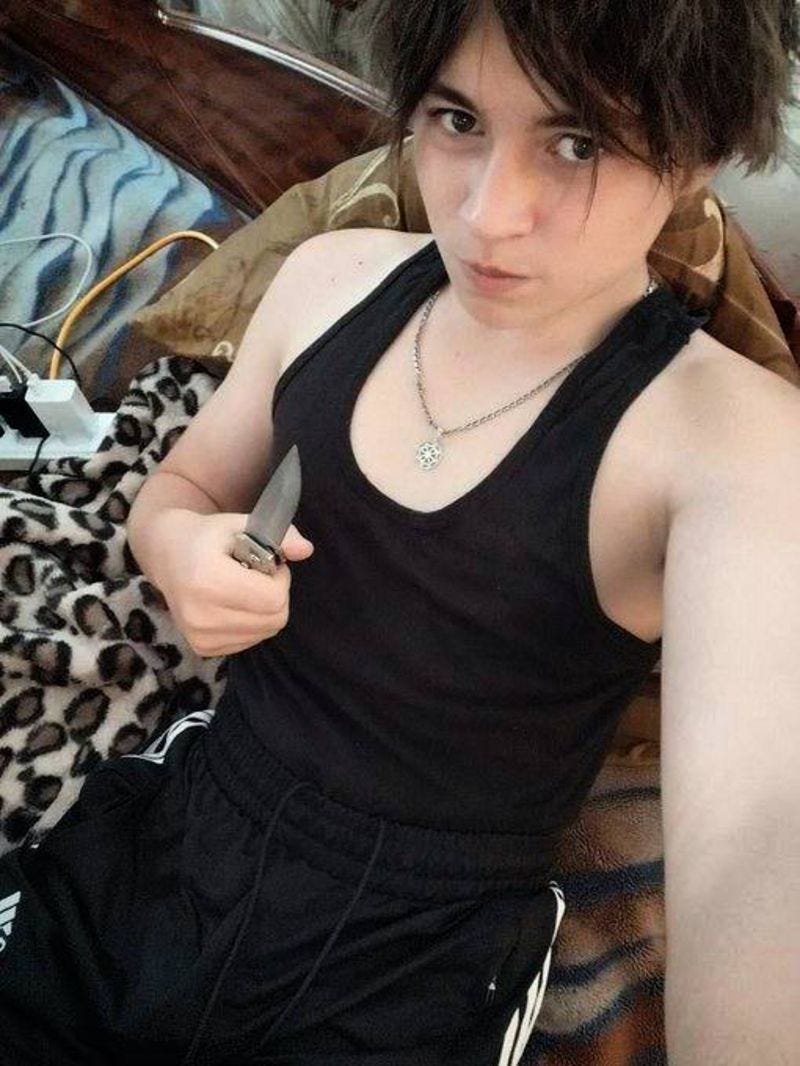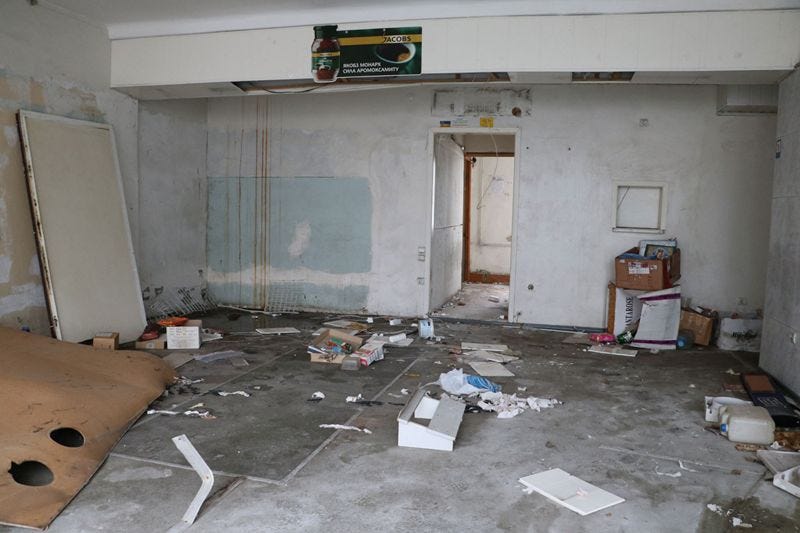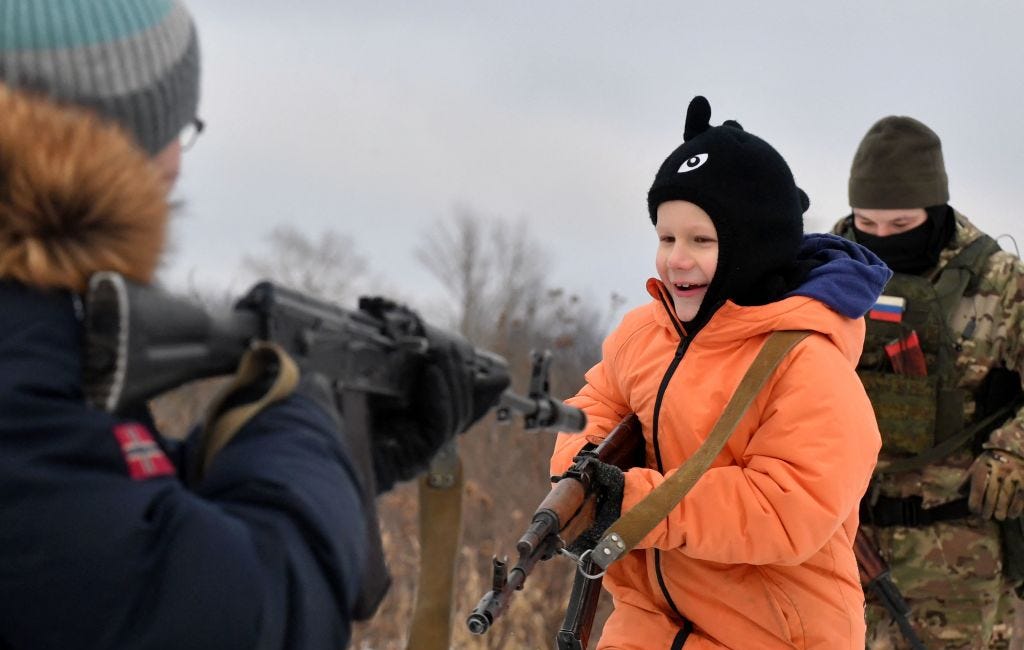Who killed the 'Berdyansk partisans': mystery surrounds the death of two teenage boys shot dead in occupied Ukrainian city
Two 16-year olds accused of railway sabotage, were hailed as national heroes when they died in a shootout with police in Berdyansk. But their families still need answers about what really happened.
By Olga Prosvirova & Svyatoslav Khomenko. (published 5 July, 2023)
Two teenage boys from the occupied Ukrainian city of Berdyansk were hailed as national heroes when they died in a shootout in a city park on 24 June. Tigran Ogannisyan and Nikita Khanganov had both been accused of railway sabotage. A month on from their violent deaths, the boys families have been offered many differing accounts of what happened but very few answers. BBC Russian tries to unravel a complex and troubling story.
‘The railway is important – we should damage it’
On 16 December 2022 Russia’s state news agency RIA Novosti reported that two people in the occupied Ukrainian city of Berdyansk had been detained for carrying out an act of sabotage on the railway lines.
The report included a video showing two young men dressed in black with their faces blurred, standing by the tracks and apparently making a confession.
“There were transformers inside,” one of them says. “I took them out and threw them over there.” He points away from the railway line.
“With a bolt cutter?” asks the second voice.
“Yeah, yeah.” The speaker sounds confident.
After this there’s a montage of edited footage, and then the story resumes.
“Here’s where the pole was, there were two supports. One of them’s gone, you can see the remnants here. The pole was pretty stuck, I had to finish the job with my foot. Here. Then it came down, the line was cut.”
At this point there’s another cut in the footage.
“We laid it across the track, there are the wires.”
“And why did you take down the pole?”
“Why?” the figure in black sounds surprised. “To block the army of the Russian Federation. The railway is the supply line. It’s important, we had to break it.”
Law enforcement bodies in Berdyansk say the two young men had damaged the electrics of the railway signalling system and had also pushed a pole onto the tracks to derail a train.
RIA Novosti said Russia was opening a criminal case under the charge of “sabotage,” which then carried a penalty of 15 years in jail.
In the report the two unnamed suspects are described variously as “two Berdyansk residents,” “miscreants,” and “the accused.” Nowhere does it say that they were also both under-age when the alleged offence was committed.
Relatives and friends have identified the two people in the footage as 16-year old friends, Tigran Ogannisyan and Nikita Khanganov.
Surprisingly, despite the serious nature of the charges against them, Tigran and Nikita were never formally detained by the police. Instead they were required to check in every day with the city prosecutor’s office. It was just one of many unusual aspects surrounding a case which was soon to become notorious across Ukraine and well beyond.
What happened in Berdyansk
Berdyansk is a port on the Sea of Azov and until recently was home to 100,000 people. It was one of the first Ukrainian cities to be occupied, falling to Russia on 28 February 2022. Residents regularly took to the streets to protest against the invasion. Russian troops broke up the demonstrations by firing into the air, arresting people, and beating them. In a matter of months, essential products, medicines and cash began to run out.
Attacks on local officials collaborating with the occupying authorities were common. Last September, unknown assailants shot the deputy head of the Russian-installed local administration and his wife. A pro-Russian official was wounded in an explosion in October, and this January the pro-Russian activist Valentina Mamai was also blown up.
On 13 December, three days before the footage incriminating Tigran and Nikita was released, partisans blew up a transformer substation, plunging a nearby Russian military barracks into darkness.
According to Ukraine’s Centre for National Resistance, the occupiers increased their checks on local residents after this incident. But those responsible were never caught.
The Centre claims attacks of this nature are carried out by experienced military personnel, and they dissuade “unprepared” citizens from taking risks.
They weren’t problem children
The two friends were both born in 2006. Tigran in August, and Nikita in June. They went to the same high-school, Berdyansk No.7, and lived nearby.
Tigran’s family describe him as well-read with a fondness for history, he even represented his school in a quiz competition. Tigran’s primary school teacher told the BBC that he was “calm and purposeful, very cerebral.” “He asked for books about Ukraine to read over the holidays.” His family were pushing for him to become a history teacher; the boy saw a future for himself in the military.
Nikita was involved in creative activities at Berdyansk youth club, where he was twice winner of the city’s kite-flying contest. He also read and recited at local festivals.
“They weren’t problem children, they were quiet and hardworking,” said Tigran and Nikita’s former teacher.
Nikita lived in Berdyansk with his parents, whilst Tigran lived with his mother, step-father, two siblings and his grandmother. Tigran’s sister had health problems and the family made regular trips to Kyiv for her treatment.
After Russia occupied Berdyansk, travelling to Kyiv became difficult, and later, impossible. Eventually the family decided to move to Germany for the sake of the daughter’s health. Tigran refused to leave with them, and instead decided to stay in Berdyansk with his grandmother.
Oksana Staroverova, Tigran’s mother, told a Ukrainian journalist that Tigran tried to join up a few days after the invasion began. The recruiters sent the 15-year old straight home. But Tigran made no secret of his sympathy for Ukraine.
“They [both] backed Ukraine,” says another of the pair’s former teachers. “They used to tear down Russian posters, and defend their position in every possible way.”
A case of sabotage
The youngsters’ troubles began at the end of September 2022, says Anastasia Panteleeva, a representative from Media Initiative for Human Rights, who specialises in defending teenagers.
“On the night of 30 September, a convoy of vehicles turned up at Tigran’s home. KAMAZ trucks, jeeps, people with guns and dogs. They were searching [the house] all night. They confiscated all the equipment they found, and even food,” says Panteleeva. Security forces claimed a “dangerous terrorist” was living at Tigran’s place.
One of the policemen hit Tigran’s grandmother whilst searching the house, continues Panteleeva. Trying to defend her, the boy got another blow in return. After that, a bag was put over his head and he was taken away.
On the same day Russian soldiers arrived to search Nikita Khanganov’s house. They found nothing and left.
Tigran was held for several days in a four-storey police complex on Grecheskaya Street, Berdyansk. He was sharing a cell with adult civilians who were apparently being held without trial as hostages by the Russian military.
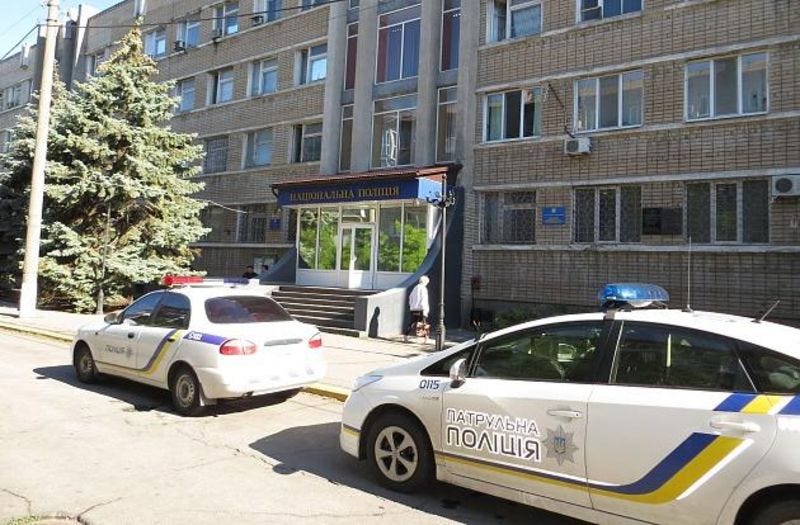
Tigran’s grandmother visited every day, but she was not allowed to see him. On the third day, the boy developed a fever, and his grandmother was allowed to bring him some home-cooked food.
On 5 October, Tigran was suddenly released on bail. He later told his family that he had been tortured with electric shocks and had undergone a mock-execution. His captors constantly mocked him: “So you wanted to be a partisan did you?”
No sooner was Tigran released, the army came back for his friend Nikita. He and his father were brought to the police station and interrogated. They were released on the condition that they made regular visits to the prosecutor’s office.
Even then, the teenagers were not left in peace. Their homes were searched regularly, and relatives now suspect that they were under surveillance for some of this period. But it would be several months before any formal allegations were made.
Trying to leave
“In December they told them they’d let them go if they both agreed to “confess” on camera,” Tigran’s mother told the Ukrainian newspaper ‘Ukrainska Pravda.’
RIA Novosti then released the interrogation video of Tigran and Nikita. Although their faces were blurred in the footage, it’s clearly both of them admitting to sabotaging the railway.
“Everyone’s been accusing Tigran’s mum, rubbishing her,” confides a family friend, who requested anonymity. “But she did everything she could to get him out.”
In January, Tigran’s whole family returned from Germany and tried to collect him. They spent a few days in Berdyansk before attempting to leave via the Russian border. Then, as now, it was almost impossible to cross the frontline into Kyiv-controlled territory.
“We went by car,” Oksana told human-rights activists. “We passed the filtration camp in Mangush, and then crossed the border at Rostov. And then we were stopped in Taganrog by the Russian traffic cops. They dragged Tigran from the car and took him to the police station, and interrogated him for five hours. Then both Tigran and I were taken to the Russian Ministry of Internal Affairs building in the village of Pokrovskoye. Troops from Krasnodar turned up, and they were surprised to see us. They’d been alerted that dangerous criminals were trying to escape. They put us in a military vehicle.”
Oksana relates how her whole family were taken into self-proclaimed DPR territory via the Rostov checkpoint. They were searched again in Mariupol, before being sent back to Berdyansk. The younger children were allowed to return to their grandmother, but Oksana, her husband and Tigran spent another night in the cells.
Oksana spent the following days lobbying the local investigators for permits to leave city. Permits were finally issued for everyone, except Tigran. Oksana’s car was regularly searched at checkpoints in case she tried to smuggle him out.
Legal troubles
On 7 April , Tigran and Nikita were taken to Rostov for a psychiatric examination, the results of which were kept from their lawyer. Nor do we know the name of the doctor involved.
Then the following month they were both formally charged with sabotage. A letter they both received on 24 May accused them “colluding” to support the Ukrainian armed forces by damaging the railway used by Russian troops the previous September.
Tigran’s mother and his lawyer both claim that the section of the track the boys allegedly damaged was already disused. Yet the prosecution overruled this, and even came up with a quote for the damage, 27,000 rubles (340 dollars).
The boys were not detained but they were assigned lawyers. According to Tigran’s family, the first lawyer tried to get her clients to plead guilty, whilst the second did nothing. Relatives tried to find independent lawyers who might do something, but nobody wanted to take the case. The risk of reprisals was too high.
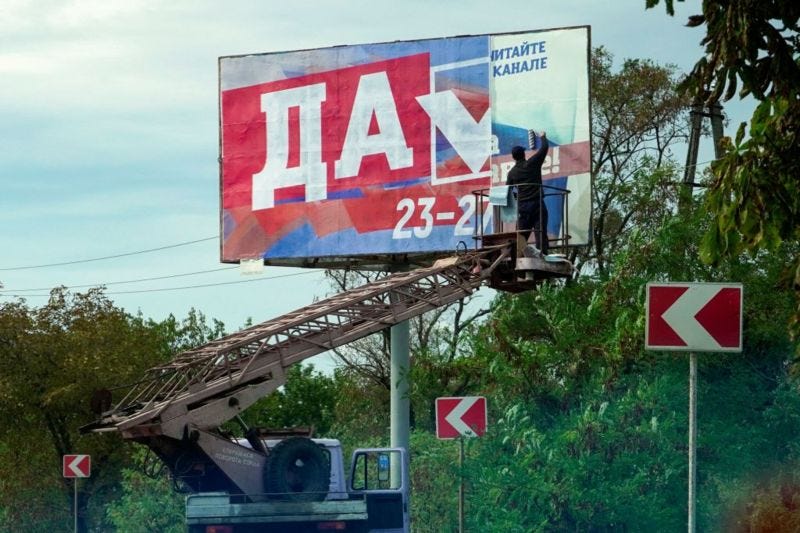
Cases against minors were, and remain, a grey area in the occupied territories, where a fully-fledged legal system has yet to emerge. The boys could even have been extradited to Russia for their trials, a particularly bleak prospect.
Efforts to obtain a fair trial for Tigran and Nikita intensified, thanks to Ukrainian human-rights activists. The case became known in Europe and America, and the US State Department released a supportive tweet.
Ukrainian human rights commissioner Dmytro Lubinets appealed for the Red Cross to visit Berdyansk, to meet with the young men and to try facilitate their transfer to Ukrainian-controlled territory.
Finally, on 15 June the European Parliament passed a special motion, demanding that the prosecution drop the charges and allow the boys to leave Berdyansk for Kyiv-controlled areas.
Tigran’s family welcomed the international response. His mother called to let him know that his departure was now a matter of time.
The shooting by Schmidt Park
Tigran and Nikita continued making their daily visits to the prosecutor’s office. In June an investigator returned to Tigran’s home with an armed escort, but he managed to sneak out, in Nikita’s company. They were in hiding for some time.
When he finally went home on 24 June the investigator was waiting for him. They had a long conversation, but nobody knows what they talked about.
Tigran had arranged to meet Nikita that evening to go for a walk. It was the eve of Nikita’s seventeenth birthday, and they were looking for a quiet place to sit. Tigran chatted with his mother on the phone, there was nothing unusual in his tone, she later recalled.
At 19:17 Berdyansk resident Elena (we have changed her name) heard an unusual sound. At first she thought it was a car engine backfiring. But she quickly realised that the sound which echoed through Schmidt park - the biggest park in the city, was actually gunfire.
“I heard it because the window was open and the TV was off,” recalls Anastasia, another Berdyansk local. “And my dog started to bark. Right after that, everyone [in the local neighbourhood chat groups] was asking: what was that? Shooting? Air-defence? Other areas of the city had heard it too.”
The description of a man apparently involved in what some said was a shootout in the park spread like wildfire on local Telegram channels. “A man (likely a soldier) with raggedy black hair, short stature, and a brown plaid shirt, wearing hand-wraps.”
By around 8 p.m. the shooting had stopped. An hour later, a local pro-Russian activist Vladimir Rogov posted in his telegram-channel. “At seven o’clock, whilst families were relaxing on the embankment, two militants opened fire with assault rifles. These terrorists have now been foiled and eliminated.”
Rogov named one of those killed as “the pro-Ukrainian terrorist previously detained for anti-Russian activities, Tigran Oganesian.” Ukrainian news announced that that Rogov had misspelt Ogannisian’s surname, and suggested that the second victim could be his friend and co-defendant, Nikita Khanganov.
It is most likely that it was Tigran the people in the neighbourhood had been trying to describe, he did have distinctive long, dark hair. He was wearing gloves, which could have been mistaken for hand-wraps from a distance. It’s less clear where the “brown plaid shirt” came from. At the time of his death, Tigran was wearing a black vest, and Nikita a blue T-shirt.
News of the killings quickly spread to the Ukrainian press. Some reports said Tigran and Nikita had killed a policeman and a civilian before being shot in turn, another claimed that they’d killed a Russian soldier and a police collaborator. It was the second version that Ukrainian commissioner Dmytro Lubinets would later repeat.
‘This is death, boys!’
What made this story really stand out and was more responsible than anything else for the myths which quickly surrounded it, is that just minutes before his death Tigran recorded a video.
In it he is alone in a room. The walls are cracked, there’s rubbish on the floor. He glances nervously round. He’s holding a gun, a Kalashnikov assault rifle, bearing traces of blood.
“We got two of them for sure,” he says. “That’s it, this is death, boys! Farewell!” He pauses, clenches a fist and cries: “Slava Ukraine!” (Glory to Ukraine!)
The location shown in this clip is not known, but there are several abandoned buildings by the park where the shootout took place. One possible building is a former dry cleaning shop on Schmidt Street, two locals told the BBC.
Users of Ukrainian social media adopted a unanimous position, that the two teenagers had been ruthlessly killed by Russian security forces for supporting Ukraine. Dmytro Lubinets described the deaths as “extrajudicial killings.”
The clip of Tigran shouting “This is death, boys! Glory to Ukraine!” went viral and there were calls for the boys to posthumously receive the title “Heroes of Ukraine.” A petition to rename a street in their honour appeared on the Zaporizhzhia city council website.
Viktoria Galintsina, head of Ukrainian administration in Berdyansk, promised that the school attended by the teenagers would be named after them when the city was liberated from its Russian occupiers.
Despite these honours, there is still no reliable evidence about what actually happened on 24 June and how Tigran and Nikita were killed. The Russian occupying forces have published at least two conflicting versions of the story, and with no access to Berdyansk, the Ukrainian authorities have no way of carrying out their own investigation.
On the evening of the shooting, Russian security forces detained Tigran’s grandmother and Nikita’s parents. Contacting them is now difficult.
Friends and relatives of the pair remain wary about making statements.
Tigran, Nikita, and the Alt-Right
Shortly after Tigran and Nikita’s deaths, more recordings emerged, surprising their relatives and human-rights activists. In one clip, apparently shot in the same building as the “Slava Ukraine” video, Tigran exclaims, “Hey, brother. We killed a few Russkies.”
If the second video immediately predated the first, it would explain Tigran’s line: “We got two of them for sure.”
The other recordings are audio only. Tigran can be heard saying, “Berdyansk, you’ll hear it on the news.” There are also the words: “I’m lying here, I’ve got my gun…I’m bleeding. I’m wounded…yeah. I guess I’m dying, and my buddy will die too. [Then follows a Nazi greeting] Glory to the white race! Give this message to my parents, tell them I love them.”
Relatives and lawyers claim they never heard the teenagers express any far-right views. And they were especially shocked to hear a white-supremacist slogan from Tigran, who was half-Armenian.
“When I heard the message, I thought there was something weird about the delivery,” says Andrei Yakovlev, a Ukrainian human rights lawyer who is representing Tigran’s family. “These expressions [the Nazi salute and “glory to the white race”] were spoken quite slowly. Tigran was full of adrenaline, but these words sounded flat -perhaps as if they had been edited.”
Yakovlev believes Tigran’s suicide messages should be examined for signs of doctoring. It remains unclear who the messages were aimed at, and who posted them online.
Despite the uncertainties over possible far-right links, there are signs that the boys were leading a secret life online.
A potential Instagram profile for Nikita Khanganov was found, with a single photo dated ‘June 2020.’ (The BBC cannot confirm the authenticity of this account, which has only 19 followers, seven of whom have Indian surnames.)
Nikita’s profile bears the Ukrainian flag, spiked with the red-and-black heraldry of the Ukrainian Insurgent Army, or “Banderites.” He uses the “Hook” symbol of the Azov Battalion (banned as a terrorist organisation in Russia) which is controversial, due to its similarity with the Nazi "Wolfsangel.” The bio reads “nationalist, sexist, racist, homophobic – and just plain Nikita.”
Two days after Tigran and Nikita’s deaths, Yevhen Karas, leader of a Ukrainian far-right movement, claimed links with the pair. Foundation for the Future, formally “S-14,” was once notorious for its attacks on Romani camps. Karas, currently fighting in the war against Russia, said both boys had helped Foundation for the Future and were also sympathetic to the alt-right group “Tradition and Order.”
“Even before the war, the kids would go out in the evenings with a spray-can, getting rid of all the filth in their home town,” Karas says. “They were actively involved in the battle against drugs and drug-dealers. And they were captivated by adventure, honour, sport, the idea of a Great Ukraine.” In his view they were “two young Cossacks” who killed “two Russian occupiers”.
Karas posted photographs of Tigran and Nikita holding knives on his Telegram channel. There was also a picture of the teenagers with covered faces hanging up a poster with the (Russian) slogan “See a dealer – kick his ass!” The slogan is associated with groups combatting the spread of drugs in urban areas. Again, it is not possible to identify the subjects in this image, or indeed its location.
The BBC has not found any other evidence that Tigran and Nikita were involved with far-right groups.
Spokespersons for Media Initiative for Human Rights (the lawyers now representing the boys’ families) have received online abuse from supporters of Karas. The BBC tried to reach Karas for comment, but he stopped responding to messages.
What happened in the abandoned house?
On 29 June, investigators in Russian-controlled Zaporizhzhia filed new, posthumous charges against Tigran and Nikita. The counts were “murder; motive – hooliganism,” “theft of a firearm,” and “threatening the life of a law-enforcement officer.”
According to the prosecution, Ogannisyan and Khanganov “conspired to steal a policeman’s weapon.” A few blocks away from Schmidt Park, they wounded a policeman with a knife, and took his “service weapon.” However according to one version of the charges, they took an assault rifle, in an another, an assault rifle and a pistol.
Russian-controlled local media reported that the weapon was used to injure at least three people, before the boys fled the crime scene.
“The under-age Khanganov used a hijacked, loaded weapon …for no apparent reason…against an unknown man who approached them. The victim died from a gunshot wound at the scene,” ran one press-release.
Following this version, Tigran and Nikita then hid themselves on the third floor of the abandoned building.
Tigran and Nikita were then shot dead by the police. In typical wording for this type of report: “On refusing to obey the legitimate and reasonable request of law-enforcement to surrender and drop their weapons, they were subsequently liquidated.”
But on 2 July this version of events was overturned by an unexpected source. The Arabic language service of the Russian propaganda channel RT released an alternative one.
RT Arabic claimed that Tigran “had been recruited by Ukrainian special forces to commit acts of terror.” The channel showed footage of a schoolboy called “Anton”, whose face is hidden and who says that Tigran’s handler even commanded their platoon in “Tanks,” a multi-player video game enjoyed by the teenagers. This seems implausible, not least because the Internet speed in Berdyansk was notoriously slow. Local residents interviewed by the BBC were constantly complaining about difficulties with loading basic sites, and periodic blackouts.
Using this story as evidence, the Russian channel argues that Ukrainian intelligence uses technology to recruit children and get them into crime.
RT went on to broadcast more footage, allegedly from the same abandoned house where the pair met their deaths.
“Hi, Alexander!” Tigran says. “Here’s the gun.” He shows the weapon to the camera, and a second youth in a blue T-shirt comes into view, likely Nikita.
“Sorry, I can’t turn myself over to the police,” Tigran continues. “I’m gonna shoot myself.”
“Tigran wounded an officer of the law, and killed a civilian,” says the RT voiceover. "Then he shot his partner, and himself.”
Pro-Ukrainian Telegram channels dismissed RT’s story and offered yet another version:
“Everything that happened was down to the Russian FSB,” said a post on the Berdyansk Partisan Army channel. “The Russian freaks gave those kids an ultimatum: if you don’t want a slow death in the basement, you’ll take your weapons and do it yourselves. They knew what would happen next.”
The BBC has contacted Russia’s Investigative Committee with a request for comment on the contradictory records of this case – and the alleged torture of Tigran Ogannisyan – and is awaiting a response.
More questions
There are many questions around all of the narratives outlined above.
The Ukrainian theory that it was all an FSB set-up feels improbable, though not impossible. The criminal case against Tigran and Nikita was a high-profile one. Given the prior interventions from the US State Department and the European Parliament, the FSB would probably not have orchestrated the events leading to the deaths of two teenagers.
And yet the pro-Russian narrative is also illogical. Ukrainian lawyer Andrei Yakovlev doubts that the boys would have taken the “suicidal” step of disarming a policeman in broad daylight, in an area with a heavy military presence.
Nor does Tigran’s final phone call to his mother offer any clues. Half an hour before the shooting, he was talking about going for a doner kebab. The boys’ lawyer says something must have happened during the walk from Tigran’s house to the park, radically changing their plans. But so much about the circumstances surrounding their deaths is still unknown.
Only one other person was confirmed killed in the shooting - 24-year old Yegor Demchenko, who apparently had no connection either to Tigran and Nikita or to the police.
According to the occupying authorities, Demchenko ran towards the armed teenagers, and was then shot. Yet Andrei Yakovlev (redacting his sources for safety reasons) claims Demchenko was shot in the back.
Yakovlev believes this reduces the chance that Tigran and Nikita shot Demchenko. More likely, he argues, the young man was shot whilst fleeing the scene by Russian security forces because they judged him to be an accomplice, or even by mistake.
Nor does the story of the boys’ suicide withstand analysis – particularly as the occupying authorities only adopted it several days after the event. Their original narrative maintained that Tigran and Nikita were shot in a legitimate anti-terror operation.
Yakovlev examined photographs of the boys’ bodies, posted online by unknown individuals. Both had head wounds, and Tigran was also shot in the heart. Evidence, Yakovlev argues, that both were “targeted by professionals, who shot to kill.”
If this were the case, why did the Russians change their story, and push the suicide narrative instead?
“They’re trying to confuse us,” Yakovlev believes, “It was the same with the Malaysian Boeing incident [Flight MH17] – they threw in as many versions as possible, including some obvious fakes, in order to conceal the truth.”
No funeral
Yakovlev suggests the Russian authorities in Berdyansk wish to obscure the events of 24 June at any cost.
“They don’t want everyone to see that they made no attempt to restrain the boys, and just opened fire. If it had been a police operation, we’d see shots in the hands or legs. Head and heart wounds are a different matter – and everyone will know that when they see the bodies.”
And so far neither Tigran nor Nikita’s families have been allowed to see their bodies.
The youngsters were supposed to be buried on 29 June, but a family friend explains that the morgue refused to hand over the bodies, and placed their building under heavy military security.
Officially, the delayed funeral is a consequence of the open criminal charges against the deceased, which require a “piece of paper” from the investigators in Melitopol. For some reason they are refusing to issue it.
Ukrainian activists claim the boys’ bodies were transferred to Melitopol on 30 June for “further examination.” However, they also note that the Berdyansk morgue remains under guard.
“It’s just an attempt at self-justification by the Russians,” Yakovlev argues. “What happened in Berdyansk proves that there are young guys like this living in the occupied territory – and they hate Russia. So the Russians will either deny everything, or do everything in their power to smear them. Another thing, Russians understand that the fate of children since the invasion is particularly sensitive, look at Putin’s [ICC] arrest warrant.”
Ukrainian law enforcement agencies have opened a criminal case on the murder of Nikita Khanganov and Tigran Ogannisyan, but are hampered by limited access to occupied territory. Lawyers are continuing with their efforts to establish the cause of death.
Tigran and Nikita are still waiting to be buried.
Read this story in full in Russian here.
Translated by Pippa Crawford.
English version edited by William Edelsten.
Denunciations and dead heroes: How Russia's schools became a new frontline in the Ukraine war
By Nataliya Zotova. As the war in Ukraine grinds on, Russia’s schools are coming under increasing pressure to promote patriotism in the classroom. The result has seen changes to the curriculum, ideology classes, and even plaques and ‘spe…

